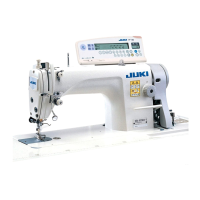
 Loading...
Loading...
Do you have a question about the JUKI DDL-8700-7 and is the answer not in the manual?
| Max Stitch Length | 5 mm |
|---|---|
| Needle Bar Stroke | 30.7 mm |
| Lift of the Presser Foot | By hand: 5.5 mm, By knee: 13 mm |
| Lubrication | Automatic |
| Needle | DB×1 |
| Hook | Full rotary hook |
| Power Requirement | Single-phase 100~120V, 200~240V |
| Motor | Direct-drive servo motor |
| Weight | 45 kg |